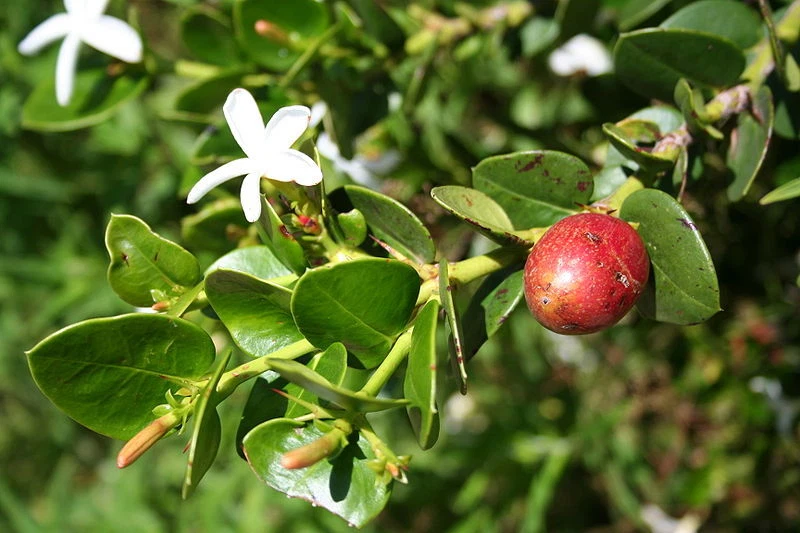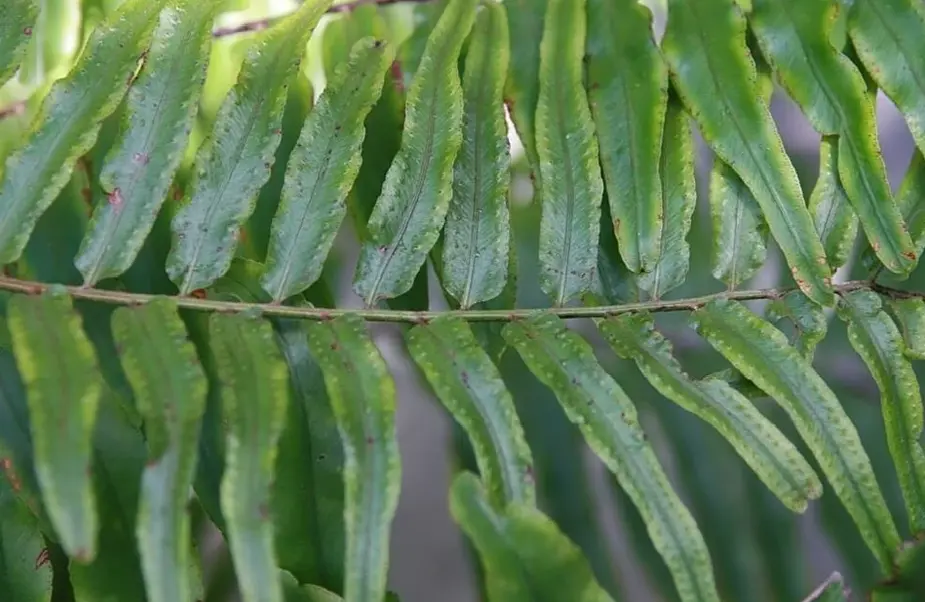
Soil Health & Fertilization
We unite suppliers and green industry professionals worldwide
Natal Plum is a glossy, evergreen shrub that’s as practical as it is beautiful. This plant is loved not only for attractive little star-shaped flowers, but also for its juicy, red fruit, which is quite comparable to a sweet cranberry-strawberry mix.
By Mariam Scott
|Published on June 17, 2025


“What if your ornamental hedge also gave you edible, fragrant fruit?”
That’s the beauty of Natal Plum —a glossy, evergreen shrub that’s as practical as it is beautiful. Native to the coastal areas of South Africa, this plant (Carissa macrocarpa) is loved not only because it can withstand salty and tough conditions with attractive little star-shaped flowers, but also for its juicy, red fruit, which is quite comparable to a sweet cranberry-strawberry mix. Natal Plum is edible and decorative, suitable for hedges, borders, or pots on sunny patios.
Whether you’re a coastal gardener needing salt-resistant plants or just someone who loves ornamental edibles, this is a winner to add to any sunny garden.
| Common Name | Natal Plum |
| Botanical Name | Carissa macrocarpa |
| Type | Evergreen shrub |
| Height | 3–6 feet tall and wide (up to 10 feet in ideal conditions) |
| Sunlight | Full sun |
| Soil | Well-draining, sandy or loamy |
| Watering | Rare once established |
| Toxicity | Fruit is edible but other parts may be mildly toxic if ingested |
| Hardiness Zones | USDA 9-11 |

September 25, 2025
9 minute read
September 24, 2025
9 minute read
September 23, 2025
10 minute read
September 22, 2025
9 minute read


Join as a seller and connect with thousands of B2B buyers nationwide!
Sign Up

Macadamia Nut Tree
The Macadamia Nut Tree (Macadamia integrifolia and Macadamia tetraphylla) is not only the source of delicious nuts — it’s also an eye-catching evergreen tree with glossy green foliage and cascading clusters of fragrant flowers.

Macho Fern
With its huge arching fronds and luxuriant green foliage, Macho Fern adds dramatic texture and volume as it grows.Whether nestled under trees or swaying from a hanging basket, it's the go-to plant for instant, low-effort jungle vibes.

N’Joy Pothos
This charming variety of Epipremnum aureum boasts lush, heart-shaped leaves splashed with creamy white and vivid green. N’Joy brings visual intrigue to windowsills, desks, or hanging planters—and it thrives with minimal attention.

Hakone Grass
There are few plants under cultivation that can match Hakone Grass (Hakonechloa macra) for grace, movement, and texture.
Natal Plum is a low-maintenance plant, so it will help you cut back on works in the garden. It is heat- and drought-tolerant, making it the best choice for warm climates.It thrives in coastal gardens thanks to its salt tolerance and can be shaped easily into formal hedges or allowed to sprawl more naturally. The white, jasmine-scented flowers appear throughout the year, followed by edible, plum-like fruit that adds another layer of interest.
It does require full sun to remain healthy and produce flowers and fruit! It requires 6 to 8 hours of full sunlight daily. In more shady spots, flowering and fruit production will be less, and the plant may become more leggy with time.
Natal Plum likes well-draining soil, doing best in sandy or slightly loamy conditions. It tolerates poor soils, even coastal sand, but dislikes waterlogged soil. Avoid heavy clay or super-rich soil unless you improve it with sand or gravel for drainage.
Native to South Africa, Natal Plum is drought tolerant but loves regular watering in its first year while roots establish. Once established, it requires only occasional watering — ideal for xeriscaping or low-water landscapes.
Pruning isn’t necessary, but keeps the plant shaped and encourages denser growth, particularly if you’re using the plant as a hedge. Thin lightly after flowering to eliminate leggy or unwieldy growth. Wear gloves at all times while pruning, as some types have small, sharp thorns. Rejuvenation pruning—cutting the plant back more heavily—can be done in early spring if needed.
Natal plums can be grown from seeds or cuttings. Seeds take longer to germinate, but if you’ve got the patience they work well. For speedier results, spring or early summer-cut softwood cuttings are most effective.
Natal Plum is suitable for container growing, especially dwarf varieties or young plants.
In USDA Zones 9–11, Natal Plum is evergreen and needs no winter protection. In cooler zones, however, it is best grown in containers and should be brought in before frost.
Natal Plum flowers most profusely from late spring through summer, although flowers can be seen from time to time throughout the year in warmer areas. The white, star-shaped flowers have a rich, jasmine-like aroma and are followed by red, oval fruit that ripens to a deep crimson.
To encourage blooming:
Natal Plum is hardy, but it does have some issues.
Whether you're seeking a resilient hedge, fragrant flowers, or edible fruit, Natal Plum is a versatile choice that checks every box. With just a bit of sunshine and good drainage, this ornamental shrub will reward gardeners with all-round interest and seasonal surprises. If you want a taste of coastal glam in your landscape — or your plate — this is your plant.
The fruit itself is edible and tasty but other parts of the plant are mildly toxic when ingested.
Absolutely. It grows well in coastal areas and is extremely salt-resistant.
Fairly quickly, particularly in warm, sunny areas with well-drained soil.
In fact, yes, pollinators such as bees increase fruiting, but the plant may still have a light fruit without them.

Soil Health & Fertilization
Victor Miller

Pest Identification & Prevention
Victor Miller

Lawn Care Tips & Maintenance
Victor Miller

Soil Health & Fertilization
Victor Miller

Smart Irrigation Systems
Victor Miller

Patios, Walkways & Driveways
Victor Miller

Soil Health & Fertilization
Victor Miller

Pest Identification & Prevention
Victor Miller
My Account
Our team is always here to help.
We are open Monday - Friday, 9:00 AM to 4:30 PM PST.